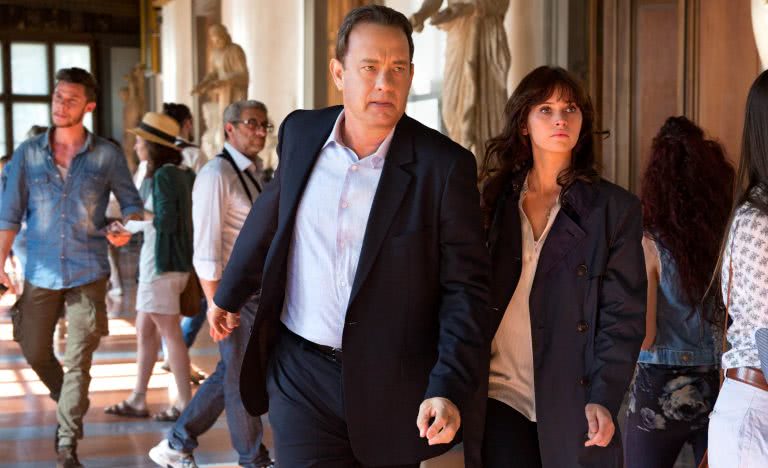★☆
Ever felt like you’re watching great artists totally phone it in for the sake of cashing a cheque?
The director of Apollo 13 and Frost/Nixon takes on the world’s most profoundly inventive vision of hell and somehow manages to make the hunt to stop a plague feel like two hours in purgatory.
Robert Langdon (Tom Hanks) wakes up in hospital, soaked in blood from a wound to the head, with no short-term memory and a biotube in his pocket. Teaming up with Dr. Sienna Brooks (Felicity Jones), he is set on the path to prevent the release of a globe-shaking virus with clues linked to Dante’s Inferno.
That most convenient of thriller contrivances – the amnesiac hero – is but the first circle of the hell into which you tread. Director Ron Howard is gifted one of the most visually compelling reference points in literary history, and for a time he makes good use of it, presenting Langdon with (completely unmotivated but plot-convenient) hallucinations of Florence as hellscape. Men with their heads twisted backwards, glass walls exploding in showers of blood, flame and terror. But these were shot for the trailer; after 20 minutes, they appear no more.
All references to Inferno are superfluous at best – contrary to other films in the series, there’s no real focus on the puzzles. When they appear, they’re explained to death by Langdon, but why is he explaining them to the only other person in the room: Brooks, a scholar of Dante? The clues have been littered around by billionaire geneticist Bertrand Zobrist (Ben Foster), who is dead within two minutes and whose reasons for placing his plague at the end of a globetrotting puzzle extend as far as servicing the plot. Screenwriter David Koepp has also dramatically changed the more challenging ending from the novel, in another effort to (somewhat ironically) further sterilize this dry exercise in genre.
Whatever your feelings about Dan Brown, The Da Vinci Code’s draw was the prize for solving the riddle; Angels & Demons arbitrarily introduced a larger threat but the symbology and machinations of the murderer intrigued. Inferno lazily spirals downward with a capricious apocalypse drive held by a sociopath whose grand nihilism is espoused through teenage spasms of emotion.
At its worst, Inferno is comically bad – I couldn’t help but laugh as a SWAT-style team kicked in a door, machine guns held aloft, and announced themselves as the World Health Organization. Sidse Babett Knudsen’s doctor explains just how virulent Zobrist’s plague is before they even know the form it takes. To inject some interest into a train ride, Koepp concocts ten minutes of exposition on a romance we’re somehow supposed to invest in, despite not knowing those involved. That great love is dismissed with the wave of a hand later on, all to shoehorn in the most groanworthy nod to the film’s namesake.
In Dante’s Inferno, Lucifer has three mouths with which he devours traitors to their benefactors. That’s one mouth each for Ron Howard, David Koepp and Dan Brown: traitors to the source material they milk for a lazy profit.
Infernois in cinemas now.

































